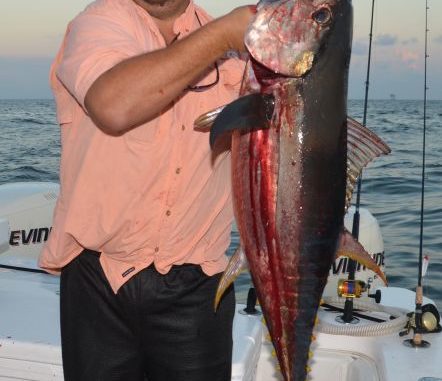
For fishing 50 or 60 miles offshore, the single most important piece of equipment is a fisherman’s boat and motor.
“A lot of people pay more attention to their rods and reels, that to their boat’s maintenance,” said Blake Fouquier, adding that it could be a big mistake.
Taking a boat’s dependability for granted can land an angler in trouble. Fouquier is particularly cautious about changing his boat’s fuel filters in this era of ethanol-laced gasoline. Like other fishermen, he prefers to buy pure gasoline, but sometimes it isn’t available.
If the boat will set up without use for two to four weeks, he adds Sta-bil fuel stabilizer to keep the ethanol from breaking down into its gasoline and ethyl alcohol components. He cited a recent example where he and his father added fuel stabilizer to the boat’s tanks, but didn’t run the engine after its addition.
Shortly after leaving the marina on the next trip, a warning went off. Fuel stabilizer was in the boat’s tanks but not its filter and the ethanol broke down in the filter. Fortunately, a quick filter change saved the day, but it serves as an example that something very simple can torpedo a trip.
Maintenance should also include regular changes of the water pump.
The Fouquier team’s current boat is a 29-foot Twin Vee catamaran, a boat they prefer over a V-hull because of its stability, particularly when stopped and fishing. Prior to this boat, they fished from a 26-foot V-hull.
They have made offshore trips in a 24-foot bay boat, something he neither recommends nor condemns.
“It all depends on the experience of the fishermen and sea conditions,” Fouquier said.
